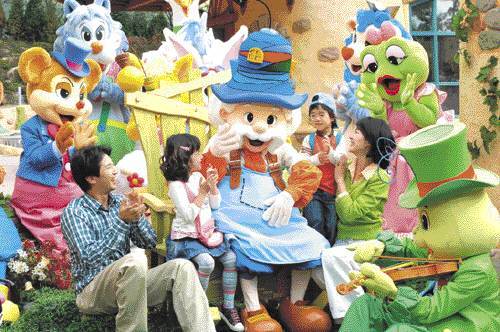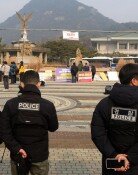Welcome to Aesops Fables

Aesops Village is a recreation of 17th century European country houses, built by the maker of Legoland (Germany), the Canadian designing company Forex.
Aesops Village is a theme park in itself. There are no admission fees, and its target visitors are preschoolers and elementary school children. The residents of this village are the animals that appear in Aesops fables. The hare and the tortoise, the fox and the crane, mother-and-son frogs. With Grandpa Aesop, they show and tell tales of morals.
Theme parks within theme parks have foreign precedents. Disneys animated characters live in Mickeys Toon Town nested within Disneyland, and Universal Studios in Florida is home to the Woodpeckers Kids Zone.
Looking around the village, the symbolic building here is the house of Aesop, way on top of a hill. Surrounding this house sprawls the village of tales, and the town, where visitors can rest. Restaurants and shops can be found in the town, and amusement facilities in the village. Everything present is a visualization of Aesops fables.
The characters catch your eye. The animals in the fables have come to life in the form of cute characters that look after the village. Aesop is also reborn as a kind-hearted grandpa. The characters all have names and have 150 character products developed after them, available in the souvenir shops.
Moving on to the fable part, the Fable Garden is an educational facility that allows children to hear and see eight episodes of Aesops fables.
Large fairy-tale books organized by fable deck the bookcase, and the animal characters jump on stage with lighting and sound. Theres also a photo spot where you can take pictures with your character of choice.
Aesops Village didnt miss a trick in luring toddlers. An interactive system activates voices if you approach a fairy-tale book, and responds to hand movements.
If you press a button in front of the boy who cried wolf, the wolf starts to chase the sheep. In the house of the fox and the crane, who teased each other with plates and gourds of food, the fox and the crane spring out of doors at a push of the button.
The final destination is grandpa Aesops house. In front of the porch at the outdoor theater, special events are being held with moving characters acting out stories. A window on the ground floor lets you peek into grandpas room.
The amusement rides and restaurants in Aesops Village are all crafted after Aesops fables. The Ball House is a space for kids to play with millions of sponge balls stuffed into air-compressed cannons. The balls are the busy ants grains of food in The Ant and the Grasshopper.
The gyro-drop (free falling ride) look-alike, Flying Rescue, is an enhanced version of the Lion and the Mouse (where the lion forgives the mouse for disturbing his sleep, and the same mouse repays the debt by helping the lion to escape from captivity later on). You hop on a flying apparatus and watch the brave mouse save the whimpering lion.
Racing Coaster is for the race of the Hare and the Tortoise, and the tea cup ride Lily Dance is where you can see the naughty frog who didnt listen to his mother in the lily pond, all from the comfort of your swirling lily.
A restaurant called Good Friends Cabin is operated by two amiable pals, a fox and a crane.
Information-
Aesops Fables Book Exhibit- Six ancient books published in 1694 will be on display, along with 13 books of Aesops Fables translated in various languages. Exhibit continues until November 6.
For questions, contact Everland at 031-320-5000 or www.everland.com.
Seung-Ha Cho summer@donga.com




![화장실 갇혔을 때 생존법…“최후에는 변기뚜껑” [알쓸톡]](https://dimg.donga.com/c/138/175/90/1/wps/NEWS/IMAGE/2025/12/26/133042007.3.png)


